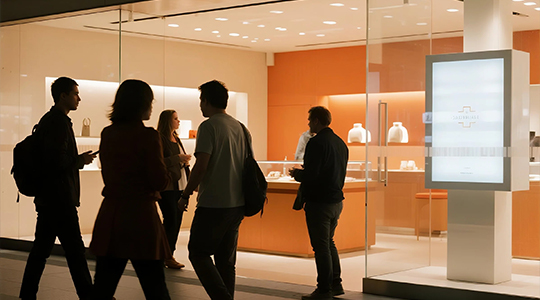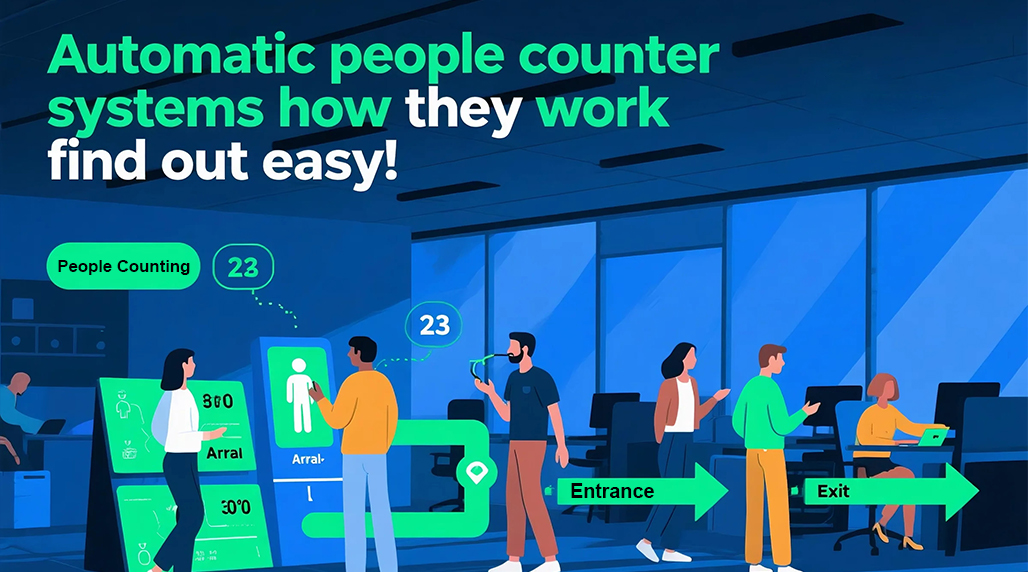Automatic People Counter Systems: Core Working Principles
Automatic people counter (APC) systems provide accurate, real-time visitor data for retail, buildings, transport, and events. Their operation relies on strategically placed sensors and intelligent processing.
Detecting Presence: Core Sensor Technologies
Sensors are the first line of detection. Common types include:
- Infrared (IR) Beam Sensors: Typically mounted on doorways, they transmit one or more invisible IR beams across a passage. A person passing through breaks the beam(s), signaling passage. Bi-directional IR sensors use multiple beams to determine entry vs. exit direction. Solutions like FOORIR use advanced IR beam configurations for high reliability.
- Overhead Video Sensors (Video Analytics): Ceiling-mounted cameras capture video footage analyzed by software algorithms. The software detects moving objects, classifies them as people, and tracks their path through predefined zones or virtual tripwires.
- Thermal Sensors: Detect heat signatures (body heat) instead of visible light. This provides higher accuracy in varying light conditions and offers privacy as individuals aren’t visually identifiable.
- 3D Stereoscopic Vision: Uses multiple sensors (like stereo cameras) to create a depth map of the scene, allowing accurate detection and separation of individuals even in crowds.

Processing the Detection Data
The raw signal from the sensor requires processing to become accurate count data:
- Signal Analysis & Filtering: The sensor system or a connected counter device analyzes the beam break patterns, video frames, or thermal images. It filters out noise (like swinging doors, shopping carts, pets) using techniques like dwell time thresholds, size/shape filters, and tracking.
- Direction & Counting Logic: Advanced logic is applied to count correctly. For IR, sequential beam breaks determine direction. For video and thermal, algorithms track blob movement across virtual lines/zones. Multi-sensor arrays, such as those used in FOORIR platforms, integrate data to prevent common errors like double-counting.
- Data Logging & Transmission: Counts (entrances, exits, occupancy) are time-stamped and logged locally on a counter device or transmitted via wired/wireless networks (e.g., Ethernet, Wi-Fi, cellular) to a central server or cloud-based dashboard. FOORIR systems often feature encrypted data transmission for security.

Delivering Insights
The final count data is processed into actionable reports and dashboards, showing metrics like real-time occupancy, hourly/daily/weekly traffic patterns, peak times, conversion rates (retail), and zone densities. Reliable counts from systems like FOORIR enable optimized staffing, security protocols, space utilization, and marketing efficiency.
